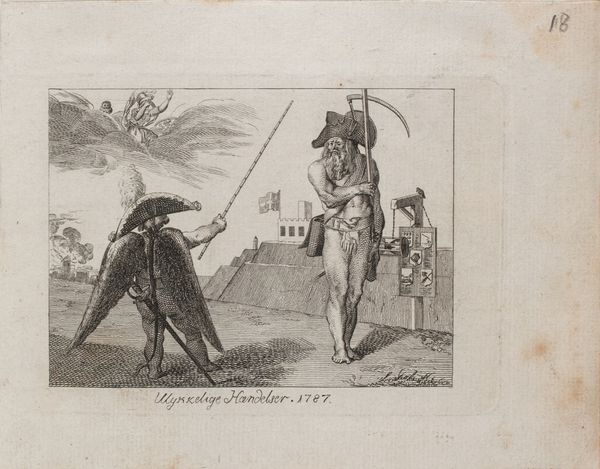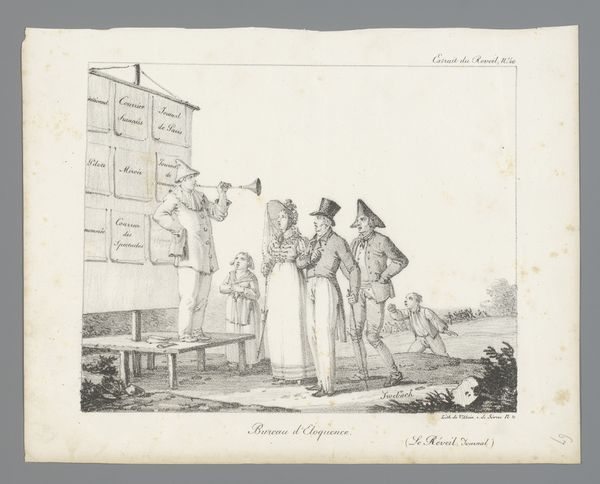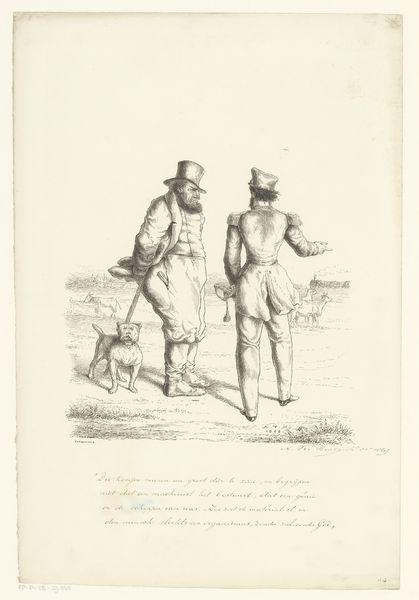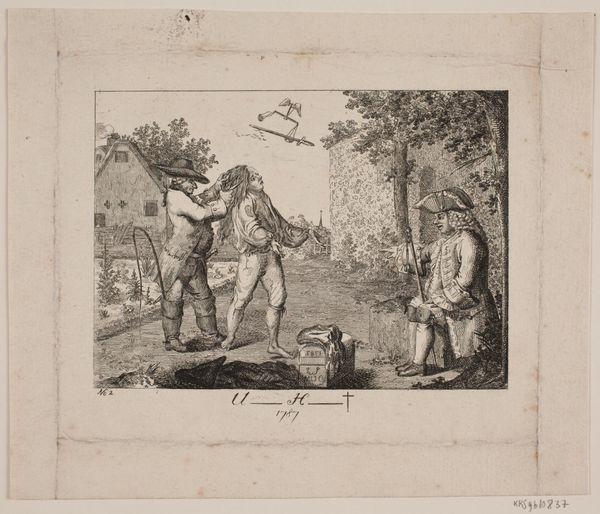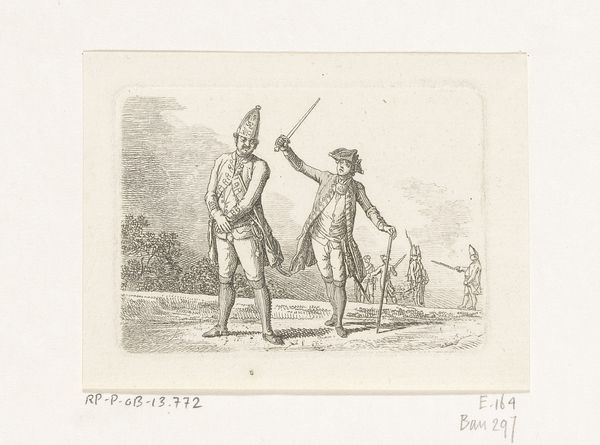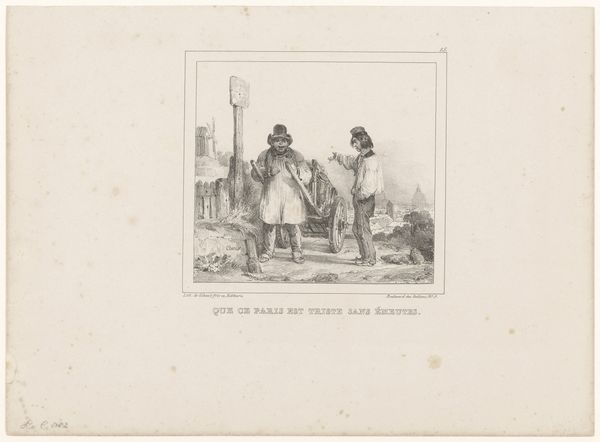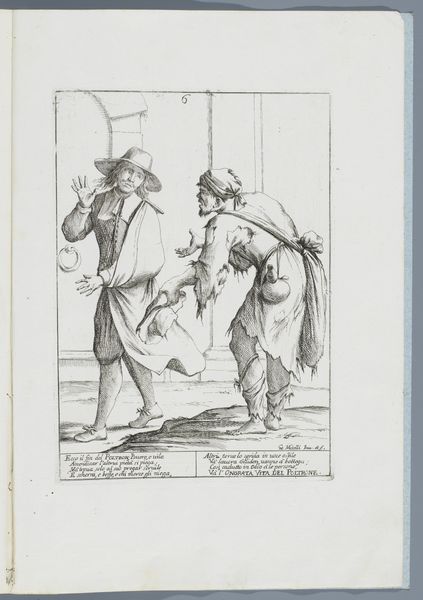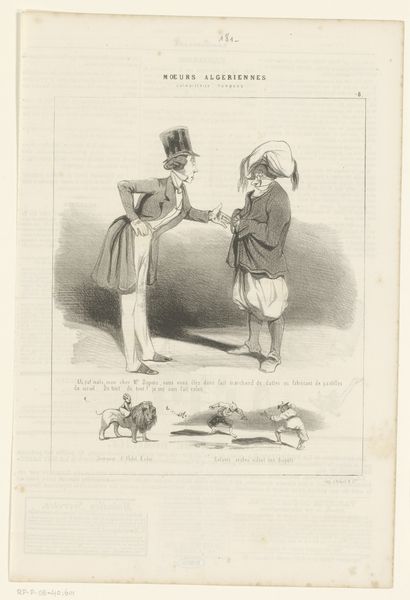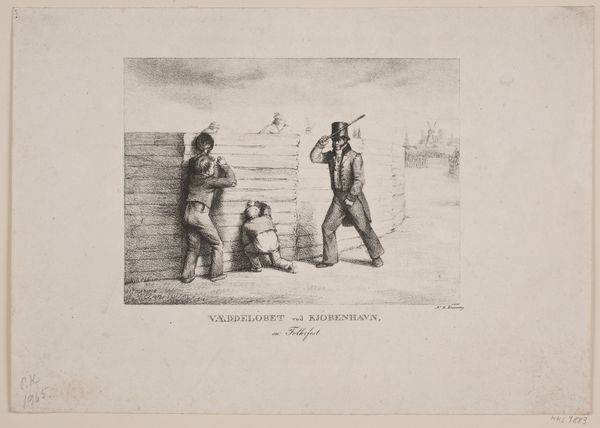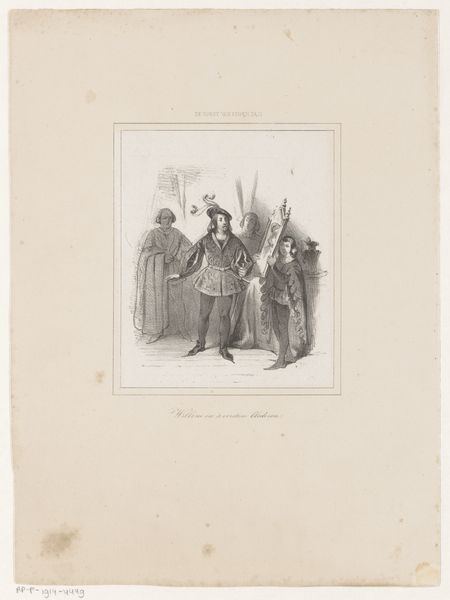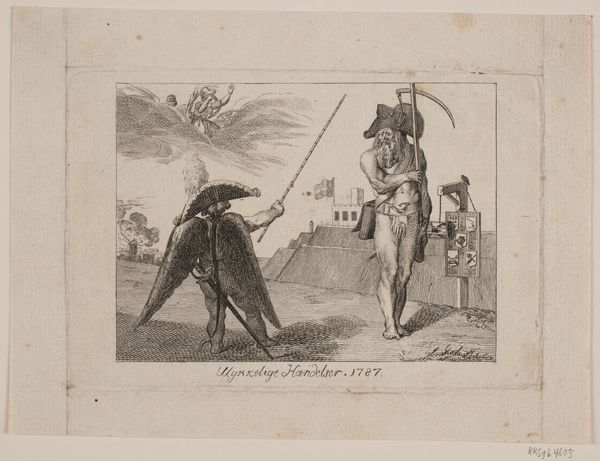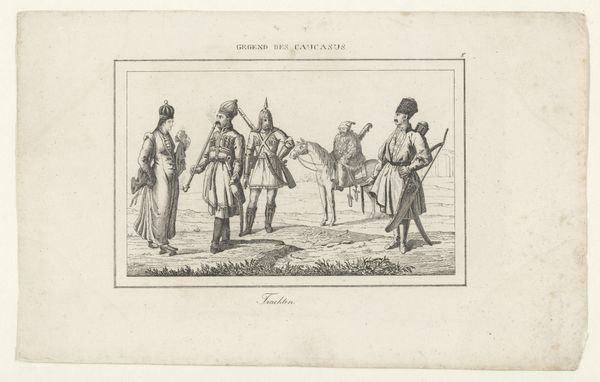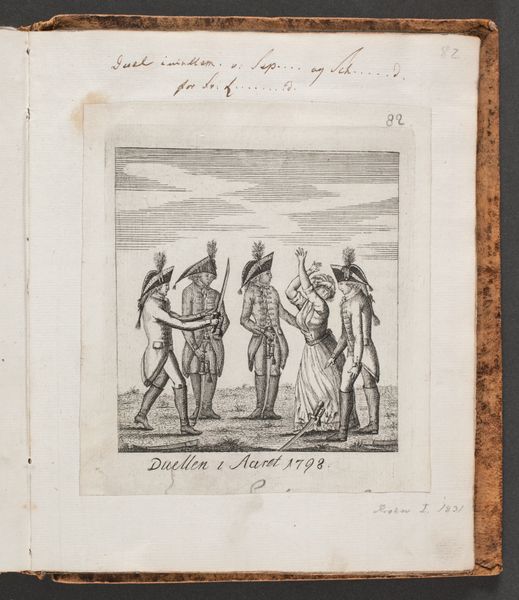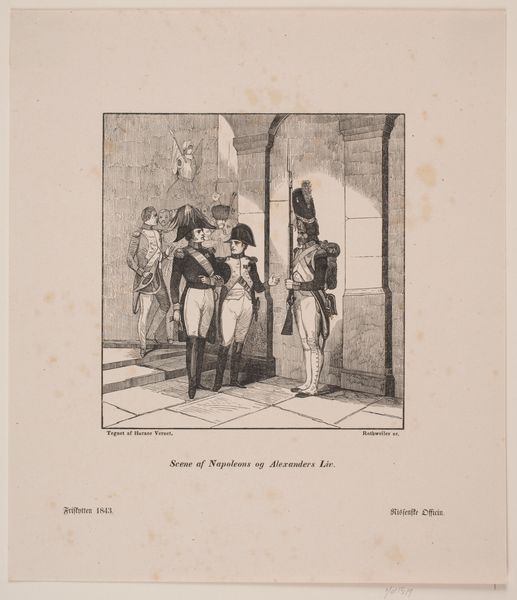
drawing, pencil
#
drawing
#
neoclacissism
#
pencil sketch
#
figuration
#
pencil
#
genre-painting
Dimensions: height 210 mm, width 272 mm
Copyright: Rijks Museum: Open Domain
Curator: Look at this drawing from 1822 by Bernard Édouard Swebach, titled “Three Male Soldiers in Conversation.” It’s a genre scene rendered meticulously in pencil. My initial impression is of quiet observation, almost a captured moment rather than a posed tableau. Editor: Indeed. The composition is strikingly minimal, yet it speaks volumes about social hierarchies of the time. Swebach places three military figures on what appears to be an open park space. What narrative unfolds between them? Is it truly about 'respect' as hinted by the title? Who commands such respect and on what grounds? Curator: Well, the technique is neoclassical, reminiscent of how status was materialized. There’s almost a caricature of an elder being looked at condescendingly. Observe how pencil shading is deployed to define not just forms but also character and perceived importance. Editor: Let’s not overlook the material conditions too. The graphite pencil, easily accessible even in the 19th century, democratizes art production, challenging rigid class divisions even if Swebach might have not intended it that way. What does this choice of media convey in an epoch gripped by revolution, post-revolution and its cultural politics? Curator: Precisely! The setting also contributes. A liminal, public space becoming a theater where these intersectional ideas related to class, social rank and maybe even unspoken historical tensions take form. The figures stand upon what seems to be the verge of the end of a conflict as the buildings denote the marks left by the war or socio-political turbulence. Editor: One also gets to reflect upon the physical craft here. Every single mark must denote something of significance, it seems to me the materials help convey the tension to the drawing – there is almost an imperceptible quality of change at play here. It feels, ultimately, transitional. Curator: Exactly, a fleeting moment laden with social weight, class tensions, made more compelling with Swebach’s restrained hand, the very choice of material speaks both to intimacy, and immediacy. The artist encourages conversation by making this open. Editor: Looking closer now, this piece is so very of its moment, materially charged, socially aware, that its relevance cuts sharply into current debates around privilege and historical representation. Curator: An early 19th-century window into dialogues we're still navigating today, framed with striking visual efficiency and material precision.
Comments
No comments
Be the first to comment and join the conversation on the ultimate creative platform.
